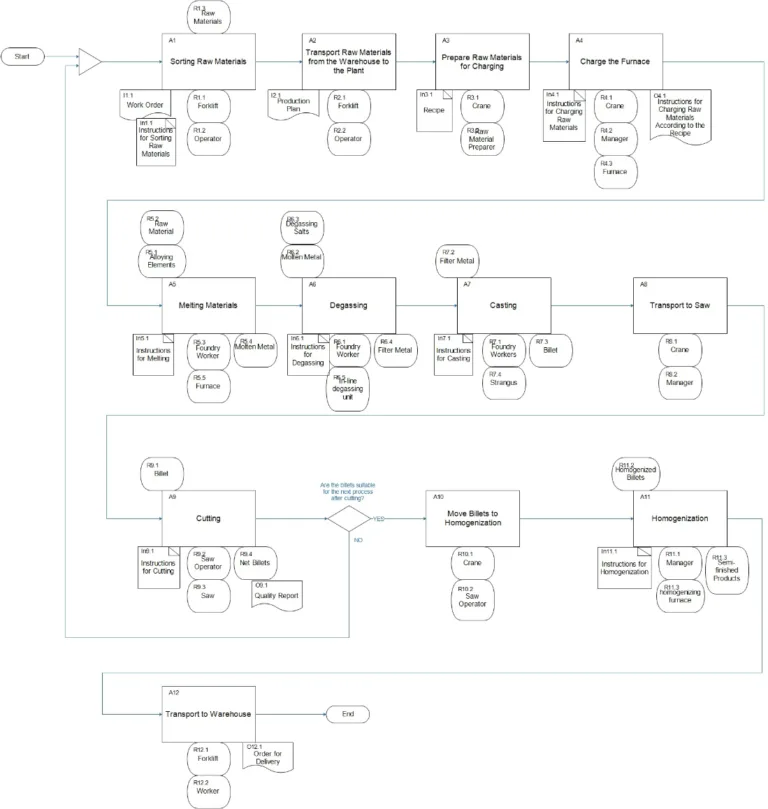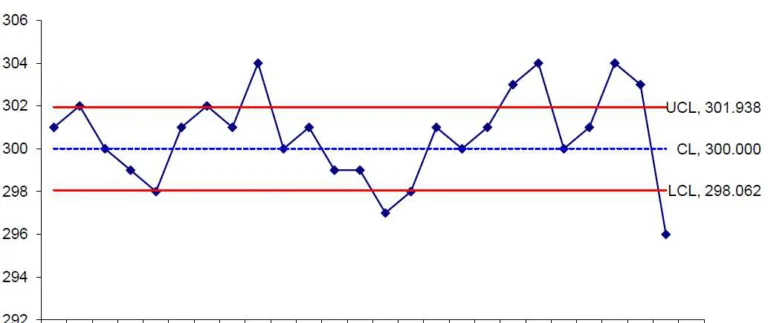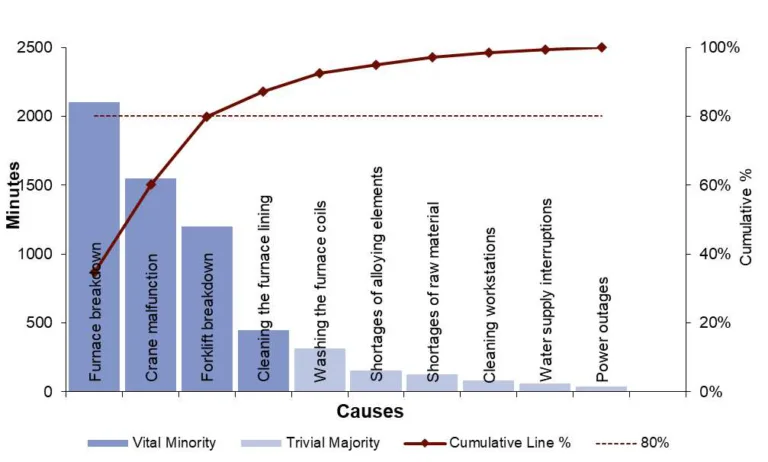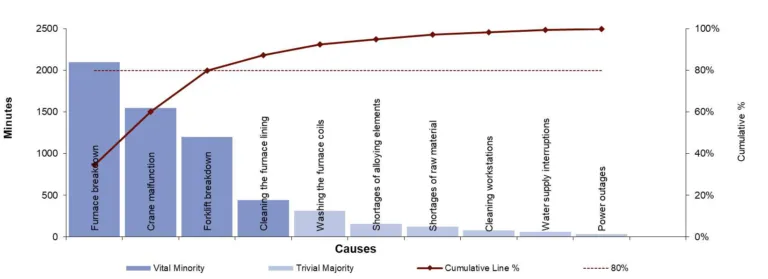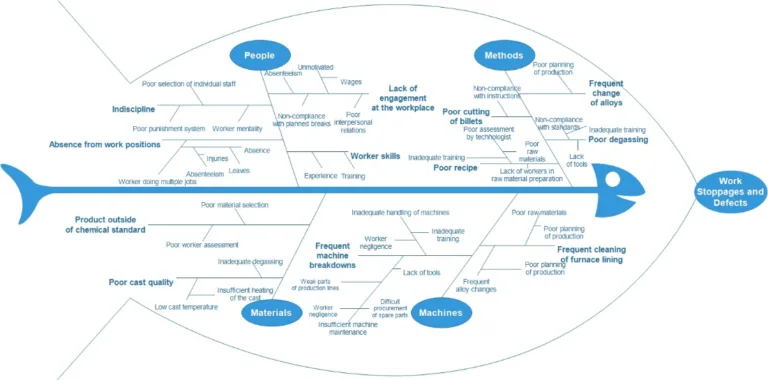This introduction paper is based on the paper "IMPROVING PRODUCTION EFFICIENCY AND QUALITY IN AN ALUMINUM PROCESSING COMPANY THROUGH LEAN PRACTICES" published by "Innovative Mechanical Engineering".
1. Overview:
- Title: IMPROVING PRODUCTION EFFICIENCY AND QUALITY IN AN ALUMINUM PROCESSING COMPANY THROUGH LEAN PRACTICES
- Author: Milena Rajić, Pedja Milosavljević, Zorana Stanković, Dragan Pavlović, Miloš Panić
- Year of publication: 2024
- Journal/academic society of publication: INNOVATIVE MECHANICAL ENGINEERING
- Keywords: Lean, Quality improvement, 5S methodology, Statistical process control, Waste reduction
2. Abstract:
This paper analyzes the application of Lean methodologies to improve the efficiency and quality of production in the aluminum foundry MTC "Nissal." The enterprise specializes in the manufacturing, refining, and shaping of aluminum and its alloys. It operates via two primary divisions: profile extrusion and aluminum rod manufacture. The main findings indicate a 14% decrease in production time mostly caused by equipment failures, and a significant rate of faults, with 71% of the defects being attributable to operator irresponsibility. By implementing Lean methods such as the 5S methodology and Statistical Process Control (SPC), the analyses showed areas that may be improved. The 5S audit revealed workplace organization and cleanliness, with an average score of 1.73 out of 5. The 5S shine phase had the lowest score of 1.38. The SPCanalysis conducted on the manufacture of billets in EN AW 2011 alloy revealed a process capability index (Cp) of 1.154 and a process capability performance index (Cpk) of 1.015. These values indicate that the process is incapable and exhibits some inconsistency. By implementing Lean techniques, the enterprise aims to decrease downtime, minimize defects, and improve overall production efficiency and quality. This will help establish MTC "Nissal" as a strong competitor in the aluminum market.
3. Introduction:
Metal production, particularly aluminum, plays a crucial role in the world economy. The aluminum industry faces challenges related to energy intensity, environmental impact, material availability, and market competition. Lean and Six Sigma methodologies have been effectively applied in the aluminum production industry to address these challenges by optimizing productivity, minimizing waste, and improving quality. Examples from companies like Alcoa, Norsk Hydro, and Rio Tinto, as well as studies in Nigeria and Portugal, demonstrate the successful implementation of Lean and Six Sigma in aluminum manufacturing. This paper aims to examine the influence of Lean and Six Sigma approaches on the effectiveness and quality of aluminum production at MTC "Nissal," a Serbian aluminum processing company, and to offer a thorough analysis of their application in this specific context, addressing a research gap in the application of Lean techniques in Serbian aluminum companies, especially smaller-scale operations.
4. Summary of the study:
Background of the research topic:
The aluminum industry is vital to the global economy but faces challenges such as energy intensity, environmental concerns, and intense competition. Lean and Six Sigma methodologies have proven effective in optimizing productivity and quality within this sector. However, research on the application of Lean techniques in aluminum companies in Serbia, particularly in medium-sized enterprises, is limited.
Status of previous research:
Previous studies and implementations in major aluminum companies like Alcoa, Norsk Hydro, and Rio Tinto have shown significant improvements in productivity, energy efficiency, defect reduction, and cost reduction through Lean and Six Sigma methodologies. Studies in Nigeria and Portugal also demonstrated the positive impact of Lean principles in aluminum production, including reduced production time and improved workplace organization.
Purpose of the study:
This study aims to analyze the application of Lean methodologies, specifically 5S and Statistical Process Control (SPC), to improve production efficiency and quality at MTC "Nissal," a medium-sized aluminum foundry in Serbia. The research seeks to identify inefficiencies and areas for improvement within the company's aluminum rod manufacturing processes and to demonstrate the potential benefits of Lean implementation in this specific context.
Core study:
The core study involves a case study at MTC "Nissal", focusing on their aluminum foundry operations. It uses direct observations, structured interviews, and quantitative data analysis to assess the current state of production. Lean tools such as 5S audits, SPC, Pareto analysis, and Ishikawa diagrams are employed to identify wastes, analyze process capability, and determine the root causes of production stoppages and defects. The study examines the effectiveness of implementing 5S and SPC in tackling inefficiencies and improving overall production performance.
5. Research Methodology
Research Design:
The research employs a case study design focused on MTC "Nissal," an aluminum foundry in Serbia. This involves an in-depth analysis of their current production processes to identify areas for improvement using Lean methodologies.
Data Collection and Analysis Methods:
Data collection methods included:
- Direct observations: Regular site visits to observe production processes in real-time, identifying inefficiencies and bottlenecks.
- Structured interviews: Interviews with production managers, line supervisors, and machine operators to gather information on production challenges, current protocols, and employee knowledge of Lean approaches.
- Quantitative data analysis: Utilizing historical production data to evaluate performance before and after Lean method application, including production time, defect rates, downtime, and process capability indices (Cp and Cpk). SPC analysis was specifically used for billet production using EN AW 2011 alloy.
- 5S audit: Utilizing a checklist to evaluate workplace organization and cleanliness across five phases (Sort, Set in Order, Shine, Standardize, Sustain).
- Pareto analysis: Analyzing production stoppages and defects to identify critical causes contributing to production losses.
- Ishikawa (fishbone) diagrams: Identifying root causes of work stoppages and defects using the 4M technique (Machines, Manpower, Methods, Materials).
Research Topics and Scope:
The research focused on the aluminum foundry production plant at MTC "Nissal," encompassing the entire process from raw material reception to billet cutting. The scope included analyzing production efficiency, quality, workplace organization, process capability, and the identification of major sources of waste, stoppages, and defects. The application of 5S methodology and SPC was specifically examined.
6. Key Results:
Key Results:
- Production Time Reduction: A 14% decrease in production time was observed, attributed mainly to addressing equipment failures.
- Defect Analysis: 71% of defects were attributed to operator irresponsibility.
- 5S Audit: The average 5S audit score was 1.73 out of 5, indicating significant room for improvement. The "Shine" phase had the lowest score of 1.38, highlighting cleanliness as a major issue.
- SPC Analysis: SPC analysis on EN AW 2011 alloy billet production revealed a process capability index (Cp) of 1.154 and a process capability performance index (Cpk) of 1.015. These values indicate an incapable process with inconsistency.
- Pareto Analysis of Stoppages: Furnace breakdowns (34.6%), crane malfunctions (60.2% cumulative), and forklift breakdowns (80.0% cumulative) were identified as the primary causes of production downtime.
- Pareto Analysis of Defects: Operator negligence (71.0%), poor cooling of crystallizer (86.1% cumulative), and poor chemical composition (92.0% cumulative) were the main causes of defects.
Figure Name List:
- Fig. 1Process map in the foundry production plant of the company MTC 'Nissal
- Fig. 2X-bar Chart
- Fig. 3R Chart
- Fig. 4Cp and Cpk Coefficients
- Fig. 5Pareto diagram for production downtime in the foundry
- Fig. 6Pareto diagram for defects (scrap)
- Fig. 7Ishikawa diagram of work stoppages and defects
7. Conclusion:
The application of Lean tools at MTC "Nissal" revealed significant opportunities for improvement in production efficiency and quality. Key areas needing attention include addressing equipment breakdowns, improving personnel utilization, and enhancing quality control. The 5S audit highlighted poor cleanliness and organization, while SPC analysis indicated process incapability and inconsistency in billet cutting. Pareto analysis pinpointed equipment failures and operator negligence as major contributors to downtime and defects, respectively. Implementing Lean methodologies, particularly focusing on equipment maintenance, operator training, and process standardization, is crucial for MTC "Nissal" to reduce waste, minimize defects, and improve overall competitiveness in the aluminum market. Investments in new machinery and overhaul of existing equipment, as proposed, are expected to yield significant improvements in production capacity, product quality, and operational efficiency.
8. References:
- Lenzen, M., Kanemoto, K., Moran, D., Geschke, A., 2012, Mapping the structure of the world economy, Environmental science & technology, 46(15), pp. 8374-8381.
- Zhang, X., Yang, H., Sun, R., Cui, M., Sun, N., Zhang, S., 2022, Evaluation and analysis of heavy metals in iron and steel industrial area, Environ Dev Sustain, 24, pp. 10997-11010.
- Alexander, L., Iskandar, I., 2023, Application of lean manufacturing in aluminum cable ladder manufacturing companies: Case study at PT. Indra Saputra Triassic, Journal of Mechanical, Civil and Industrial Engineering, 4(1), pp. 09-16.
- Balomenos, E., Panias, D., Paspaliaris, I., 2011, Energy and exergy analysis of the primary aluminum production processes: a review on current and future sustainability, Mineral Processing & Extractive Metallurgy Review, 32(2), pp. 69-89.
- Statista, 2023, Worldwide primary aluminum production from 2010 to 2022, Retrieved from https://www.statista.com/statistics/1372840/worldwide-primary-aluminum-production/(last access: 05.07.2024)
- Statista, 2023, Distribution of demand for primary aluminum worldwide from 2017 to 2021, by region, Retrieved from https://www.statista.com/statistics/605376/distribution-of-demand-for-primary-aluminum-worldwide-by-region/(last access: 05.07.2024)
- OECD. Resource efficiency and circular economy. Retrieved from https://www.oecd.org/en/topics/resource-efficiency-and-circular-economy.html(last access: 05.07.2024)
- Paraschos, T., 2013, Production of aluminum: Emphasis on energy and materials requirements, Retrieved from https://thanosparaschos.eu/wp-content/uploads/2013/11/Production-of-aluminum-emphasis-on-energy-and-materials-requirements.pdf(last access: 05.07.2024)
- Gautam, M., Pandey, B., Agrawal, M., 2018, Carbon footprint of aluminum production: Emissions and mitigation, Environmental carbon footprints, Butterworth-Heinemann, pp. 197-228.
- Aluminum Association, Sustainability Recycling. Aluminum Association. Retrieved from https://www.aluminum.org/Recycling (last access: 05.07.2024)
- International Aluminium Institute, 2021, World Aluminium Factsheet. International Aluminium Institute. Retrieved from https://international-aluminium.org/wp-content/uploads/2021/01/wa_factsheet_final.pdf(last access: 05.07.2024)
- Marques, P. A. D. A., Matthé, R., 2017, Six Sigma DMAIC project to improve the performance of an aluminum die casting operation in Portugal, International Journal of Quality & Reliability Management, 34(2), pp. 307-330.
- Klochkov, Y., Gazizulina, A., Muralidharan, K., 2019, Lean six sigma for sustainable business practices: A case study and standardisation. International Journal for Quality Research, 13(1), 47-74.
- Alcoa, 2021, Annual Report 2021. Retrieved fromwww.alcoa.com (last access: 05.07.2024)
- Das, S, 2021, The quest for low carbon aluminum: Developing a sustainability index, Light Met. Age, 79(1), pp. 34-43.
- Hydro, 2019, Annual Report 2019, Retrieved fromwww.hydro.com(last access: 05.07.2024)
- Kęsek, M., Bogacz, P., Migza, M., 2023, Study on the Usefulness of Lean Management Tools and Techniques in Coal Mines in Poland, Energies, 16(21), 7240.
- Zhang, X., 2023, The Development of High Energy Storage Capacity Li-ion Battery Anode Material and Quantitative Analysis of Solid Electrolyte Interphase, University of California, Los Angeles.
- Ota,O.U., Obiukwu, O.O., Okafor B.E., Ekpechi D.A., 2023, Lean optimization of batch production in an aluminium company, Asian J. Curr. Res, 8(4), pp.62-81.
- Marques, P. A. D. A., Matthé, R., 2017, Six Sigma DMAIC project to improve the performance of an aluminum die casting operation in Portugal, International Journal of Quality & Reliability Management, 34(2), pp. 307-330.
9. Copyright:
- This material is a paper by Milena Rajić, Pedja Milosavljević, Zorana Stanković, Dragan Pavlović, Miloš Panić. Based on "IMPROVING PRODUCTION EFFICIENCY AND QUALITY IN AN ALUMINUM PROCESSING COMPANY THROUGH LEAN PRACTICES".
- Source of the paper: https://doi.org/10.5937/inovacije2402014R
This material is summarized based on the above paper, and unauthorized use for commercial purposes is prohibited.
Copyright © 2025 CASTMAN. All rights reserved.
